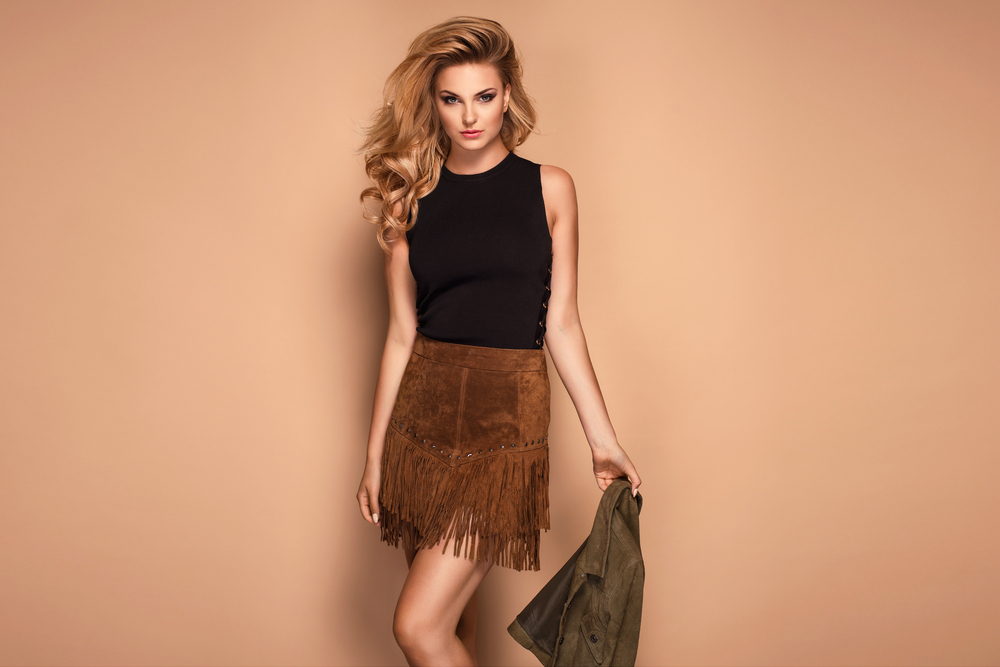
The Evolution and Impact of Modeling: Unveiling the Secrets Behind the World of Fashion and Beyond in Photoshoots

In today's glamorous world of fashion and advertising, modelling plays a central role in capturing the essence of a brand or a concept. Models are the faces that grace magazine covers, fill our screens with captivating commercials, and dominate our social media feeds. But modeling is not merely about posing in front of a camera and looking pretty; it goes much deeper and has evolved throughout history to become a complex and influential industry.
The Roots of Modeling
The art of modeling can be traced back to ancient civilizations, such as ancient Egypt and Greece, where statues and sculptures were idealized representations of the human body. These early depictions set the foundation for the concept of beauty and physical perfection.
However, it was not until the late 19th century that we saw the birth of modern modeling. The rise of couture houses in Paris led to the need for live models to showcase the latest fashion designs to potential buyers. These models, known as mannequins, were initially exclusively white, thin, and tall, representing a narrow definition of beauty.
The Changing Face of Modeling
As the fashion industry expanded and became more inclusive, so did the definition of beauty. The 1960s saw the emergence of supermodels like Twiggy and Jean Shrimpton, who challenged traditional beauty standards with their boyish figures and unique styles. This wave of diversity continued to evolve with the introduction of Naomi Campbell, Tyra Banks, and other black models who broke barriers and paved the way for a more diverse and representative industry.
In recent years, the fashion industry has become increasingly aware of the need for inclusivity, body positivity, and diversity. Plus-size models like Ashley Graham and Tess Holliday have shattered stereotypes and empowered women of all sizes to embrace their bodies. Models with disabilities, such as Jillian Mercado, have become catalysts for change, challenging society's perception of beauty.
The Rise of Social Media and its Influence
The advent of social media has revolutionized the modeling industry, breaking down traditional barriers and providing a platform for aspiring models to showcase their talent. Instagram, in particular, has become a global stage for modeling, with influencers gaining millions of followers and securing lucrative collaborations with fashion brands.
Social media's impact on modeling extends beyond personal branding. It has democratized the industry, allowing anyone with passion and drive to enter the world of fashion. Agencies now scout models on Instagram, bypassing the traditional route of open calls and auditions. This direct access to models has also reshaped the way brands work, opting for smaller campaigns and collaborations with micro-influencers to reach niche audiences.
The Power of Modeling in Fashion and Beyond
Modeling has become a tool for artistic expression, empowerment, and social change. Fashion editorials often serve as powerful platforms to address social issues like sustainability, body positivity, and gender equality. Models are no longer just pretty faces; they are activists, advocates, and influencers who use their platforms to amplify important messages.
Furthermore, modeling extends far beyond the fashion industry. Models are often seen in advertising campaigns for various products and services, working as brand ambassadors and endorsers. Their images have the power to sell a lifestyle, creating desire in consumers and shaping cultural trends.
Frequently Asked Questions
Q1: How can I become a model?
A1: Start by building a portfolio and researching reputable modeling agencies. Attend open calls or submit your portfolio through their websites. It's also essential to maintain your physical health and be prepared for potential rejections.
Q2: Do all models have to be thin and conventionally attractive?
A2: No. The industry is evolving, and there is growing demand for diversity and inclusivity. Different types of models, such as plus-size, androgynous, and disabled models, are now gaining recognition and success.
Q3: Can social media be a launchpad for a modeling career?
A3: Absolutely. Many successful models have been discovered on platforms like Instagram. It's crucial to curate your online presence, showcase your unique style, and engage with the modeling community.
Q4: What challenges do models face?
A4: Models face intense competition, rejection, and pressure to maintain a certain appearance. They often work irregular hours, travel frequently, and may experience exploitation or mistreatment in some cases.
Q5: Is modeling a sustainable career?
A5: It depends on various factors, such as the individual's dedication, market demand, and industry trends. A successful modeling career can be financially rewarding, but it is crucial to have a backup plan and be prepared for the unpredictable nature of the industry.
In conclusion, modeling has come a long way from its early roots, evolving into an influential industry that shapes beauty standards, challenges norms, and drives social change. With the rise of social media and the increasing demand for diversity and inclusivity, the world of modeling continues to redefine itself, proving that beauty knows no boundaries.
Other useful resources
- https://en.wikipedia.org/wiki/Category:Modeling_(profession)
- https://www.planetmodelphoto.com/models/modeling/usa/wilmington/nc-north-carolina
- https://www.planetmodelphoto.com
- https://en.wikipedia.org/wiki/Category:Modeling_agencies